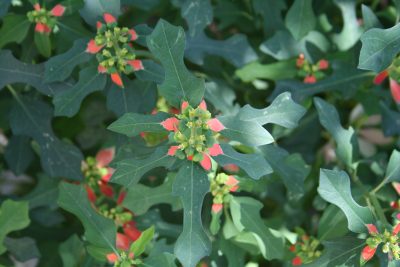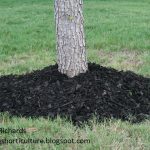What is this in my firecracker fern?
Thanks to Diane Hanna for sending this great question! The stringy spaghetti-looking mess covering her beautiful firecracker fern is actually a parasitic plant called dodder. Dodder invades the tissue of the host plant and steals its nutrients to grow. It has very little chlorophyll, so it usually isn’t green. It can range in color from pale whitish-brown to bright orange, and when you first see it, you’ll wonder if someone hasn’t covered your plants in silly string.
This plant does flower and produces a prolific number of seeds, so you should remove it immediately and throw it away before the seeds have a chance to spread. Once you have seen the plant, keep an eye out for it around your yard and pull out fresh seedlings as soon as you see them growing on any of your plants.
In this situation, I would suggest first removing all of the dodder from the container. Also remove any plant parts that the dodder is attached to-those have already been invaded and dodder will grow back from them. If you notice that the dodder grows back, I would suggest tossing the whole container and getting a new firecracker fern.
There’s no recommended chemical control for dodder in this situation, so don’t use any herbicides or fungicides. Although this plant seems like an alien from outer space, it’s actually pretty easy to control with good cultural practices-ripping it up and tossing it out. I bet this one came in with the plant when it was originally purchased. But as long as you get rid of the parasite before the seeds spread around, there shouldn’t be any future flare-ups.

 Kellan Vincent
Kellan Vincent Lisa Berdoll
Lisa Berdoll Daphne Richards
Daphne Richards
 Trisha Shirey
Trisha Shirey How Not to Kill Your Trees Pt. 2
How Not to Kill Your Trees Pt. 2